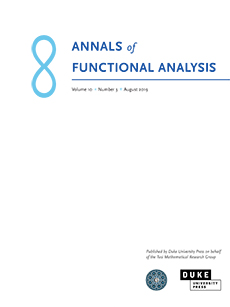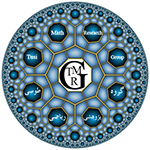Abstract
Given a finite subset $\sigma$ of the unit disc $\mathbb{D}$ and a holomorphic function $f$ in $\mathbb{D}$ belonging to a class $X$, we are looking for a function $g$ in another class $Y$ which satisfies $g_{\vert\sigma}=f_{\vert\sigma}$ and is of minimal norm in $Y$. More precisely, we consider the interpolation constant $c\left(\sigma,\, X,\, Y\right)=\mbox{sup}{}_{f\in X,\,\parallel f\parallel_{X}\leq1}\mbox{inf}_{g_{\vert\sigma}=f_{\vert\sigma}}\left\Vert g\right\Vert _{Y}.$ When $Y=H^{\infty}$, our interpolation problem includes those of Nevanlinna-Pick and Carathéodory-Schur. If $X$ is a Hilbert space belonging to the families of weighted Hardy and Bergman spaces, we obtain a sharp upper bound for the constant $c\left(\sigma,\, X,\, H^{\infty}\right)$ in terms of $n=\mbox{card}\,\sigma$ and $r=\mbox{max}{}_{\lambda\in\sigma}\left|\lambda\right|\lt 1$. If $X$ is a general Hardy-Sobolev space or a general weighted Bergman space (not necessarily of Hilbert type), we also establish upper and lower bounds for $c\left(\sigma,\, X,\, H^{\infty}\right)$ but with some gaps between these bounds. This problem of constrained interpolation is partially motivated by applications in matrix analysis and in operator theory.
Citation
Rachid Zarouf. "Effective $H^{\infty}$ interpolation constrained by weighted Hardy and Bergman norms." Ann. Funct. Anal. 2 (2) 59 - 74, 2011. https://doi.org/10.15352/afa/1399900195
Information





